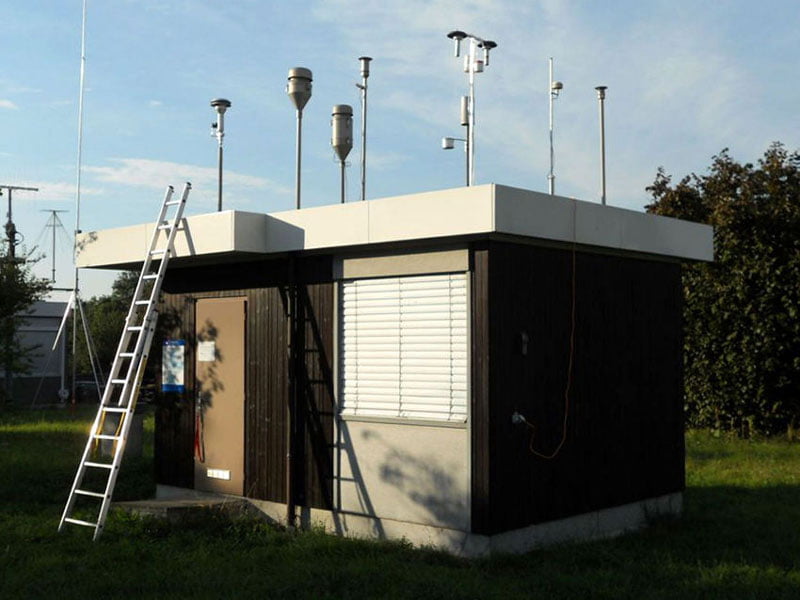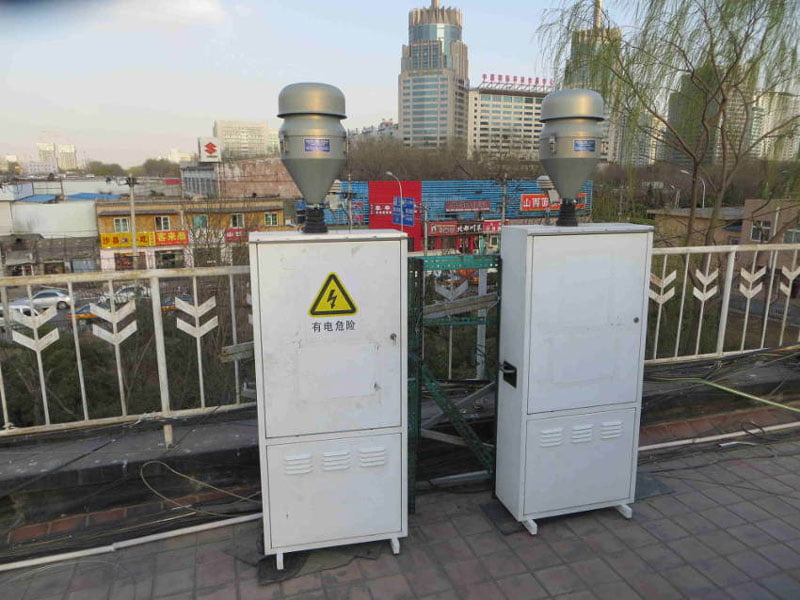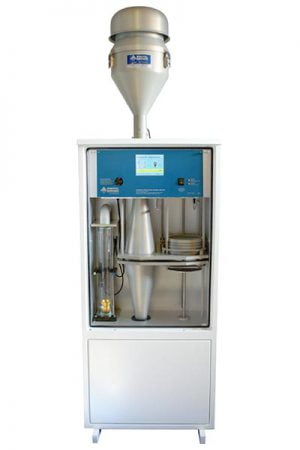DHA80
DHA80

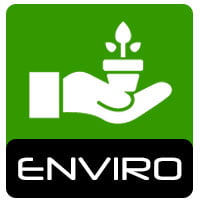
DHA80 Campionatore Sequenziale Alto Volume
In grado di campionare l’aerosol e composti semi-volatili (es. PCB, PCDD, PCDF) su resina XAD2 o PUF.
DHA-80 è un Campionatore Sequenziale Alto Volume in grado di campionare l’aerosol su membrana filtrante e (opzionale) i composti semi-volatili (es. PCB, PCDD, PCDF) su resina XAD2 o PUF.
L’aerosol, di dimensione selezionata in base alla testa di prelievo scelta (PTS, PM10, PM2.5, PM1), viene raccolto su membrana filtrante di 150 mm di diametro. La quantità massima di filtri installabili è 15.
Lo strumento, in conformità alla normativa EN12341:2014, è corredato in opzione con un sistema di condizionamento del campione e del contenitore dei filtri campionati.
- Flusso di lavoro 100-1000 l/min (6-60 m3/h).
- Compensazione automatica delle perdite di carico in base al flusso selezionato.
- Teste di campionamento certificate secondo le norme EN12341:2014 e EN14907:2005.
- Scarico dati con USB e stampante integrata.
Principali caratteristiche
- Flusso di campionamento: 100-1000 l/min (6-60 m3/h);
- Teste di campionamento PM in accordo con la norma EN12341:2014;
- Filtri campionamento PM (150 mm ∅);
- Campionamento sequenziale automatico filtri (15) + fiale per la fase particolata e gassosa;
- Sistema di conservazione e raffreddamento dei filtri campionati in accordo con la norma EN12341:2014;
- Compensazione automatica delle perdite di carico in base al flusso selezionato;
- Controllo e scarico dati in remoto (RS-232, ethernet, modem wireless), USB e stampante integrata (opzionale);
- Semplicità di utilizzo e programmazione, mediante touch-screen frontale;
- Elevata autonomia di limitate operazioni di manutenzione (pompa di campionamento: 36000 ore);
- Parametri meteo (T, P, RH, vento) e campionamento condizionale.
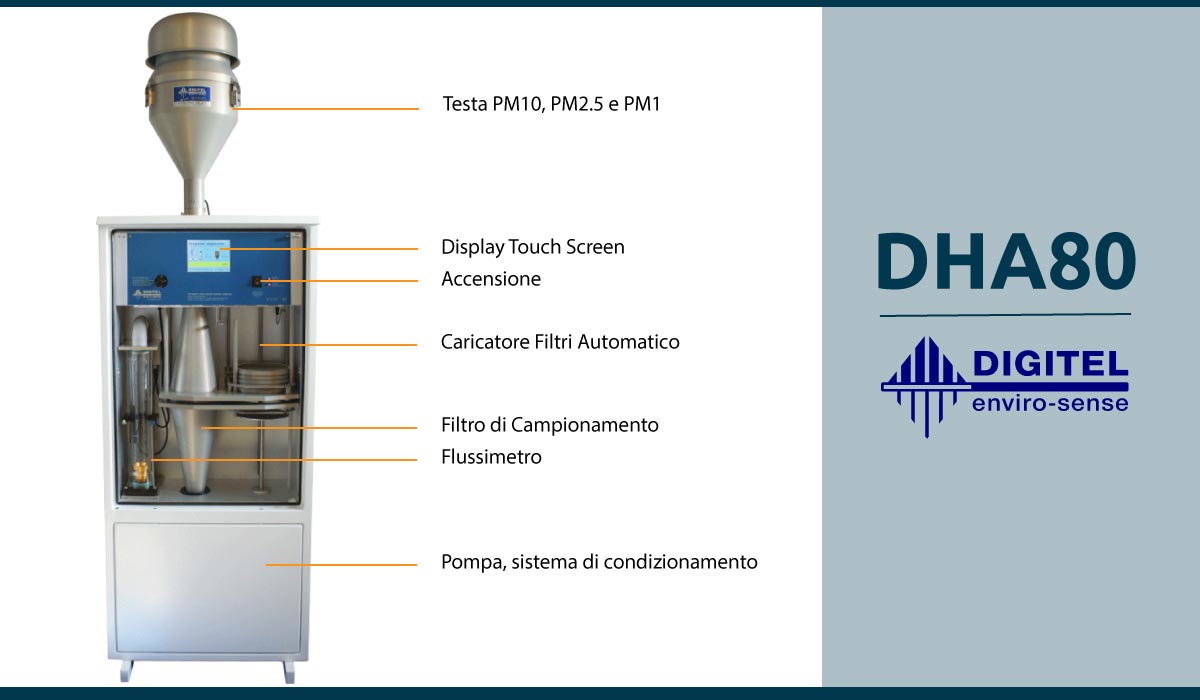
Applicazioni
- Campionamento e speciazione chimica PM (1, 2, 3, 4);
- Modelli recettore- studio delle sorgenti (2; 4; 5; 6);
- Composti organici semivolatili (SVOC) in fase PM e gas (POPS, contaminanti emergenti, pesticidi…)(6; 7; 8);
- Siti industriali (6; 9);
- Siti remoti (5; 10; 11; 12; 13);
- Trasporto atmosferico su lunga distanza (7; 12);
- Radioattività (10);
- Bioaerosol (11; 14; 15).
1. Ajtai T., et al., 2019; “Diurnal variation of aethalometer correction factors and optical absorption assessment of nucleation events using multi-wavelenght photoacoustic spectroscopy”. Journal of Environmental Sciences, v 83, 96-109
2. Pant P., et al., 2017; “Characterization of Traffic-Related Particulate Matter Emissions in a Road Tunnel in Birmingham, UK: Trace Metals and Organic Molecular Markers”. Aerosol and Air Quality Research, 17; 117-130
3. Kumal K., et al., 2013; “Polyciclic aromatic hydrocarbons and hopanes in PM1 aerosols in urban areas”. Atmospheric Environment, v 67, 27-37
4. Iinuma Y., et al., 2010; “Methyl-Nitrocatechols: Atmospheric Tracer Compounds for Biomass Burning Secondary Organic Aerosols”. Environmental Science and Technology, v 44, 8453-8459
5. Masalaite A., et al., 2020; “Seasonal changes of sources and volatility of carbonaceous aerosol at urban, coastal and forest sites in Eastern Europe (Lithuania)”. Atmospheric Environment, v 225, 117374
6. Klima V., et al., 2020. “Assessment of Air Pollution with Polychlorinated Dibenzodioxins (PCDDs) and Polychlorinated Dibenzofuranes (PCDFs) in Lithuania. Atmosphere, v 11, 759
7. Halse A. K., et al., 2013; “Forecasting long-range atmospheric transport episodes of polychlorinated biphenyls using FLEXPART”. Atmospheric Environment, v 71, 335-339
8. Desert M., et al., 2018; “Spatial and temporal distribution of current-use pesticides in ambient air of Provence-Alpes-Cote-d’ Azur Region and Corsica, France”. Atmospheric Environment, v 192, 241-256
9. Beddows D.C.S. and Harrison R.M., 2018; “Identification of specific sources of airborne particles emitted from within a complex industrial (steelworks) site”. Atmospheric Environment, v 183, 122-134
10. Flury T. and Volkle H., 2008; “Monitoring of air radioactivity at the Jungraujoch research station: Test of a new high volume aerosol sampler”. Environmental Science and Technology, v 391, issues 2-3, 284-287
11. Els N., et al., 2020; “Comparison of Bacterial and Fungal Composition and Their Chemical Interaction in Free Tropospheric Air and Snow Over an Entire Winter Season at Mount Sonnblick, Austria”. Frontiers in Microbiology, v 11, Article 980
12. Carpenter L.J., et al., 2010; “Seasonal characteristics of tropical marine boundary layer air measured at the Cape Verde Atmospheric Observatory”. Journal of Atmospheric Chemistry, v 67, 87-140
13. Hansen A.M., et al., 2014. “Organosulfates and organic acids in Arctic aerosols: speciation, annual variation and concentration levels”. Atmospheric Chemistry and Physics, v 14, 7807-7823
14. Zhang S., et al., 2019. “Seasonal Variation of Microbial Activity and Pathogenic Bacteria under non-serious pollution levels in Beijing”. Aerosol and Air Quality Research, v 19, 1798-1807
15. Qiu G., et al., 2020 “Total Bioaerosol Detection by a Succinimidyl-Ester-Functionalized Plasmonic Biosensor To Reveal Different Characteristics at Three Locations in Switzerland”. Environmental Science and Technology, v 54, 1353-1362
